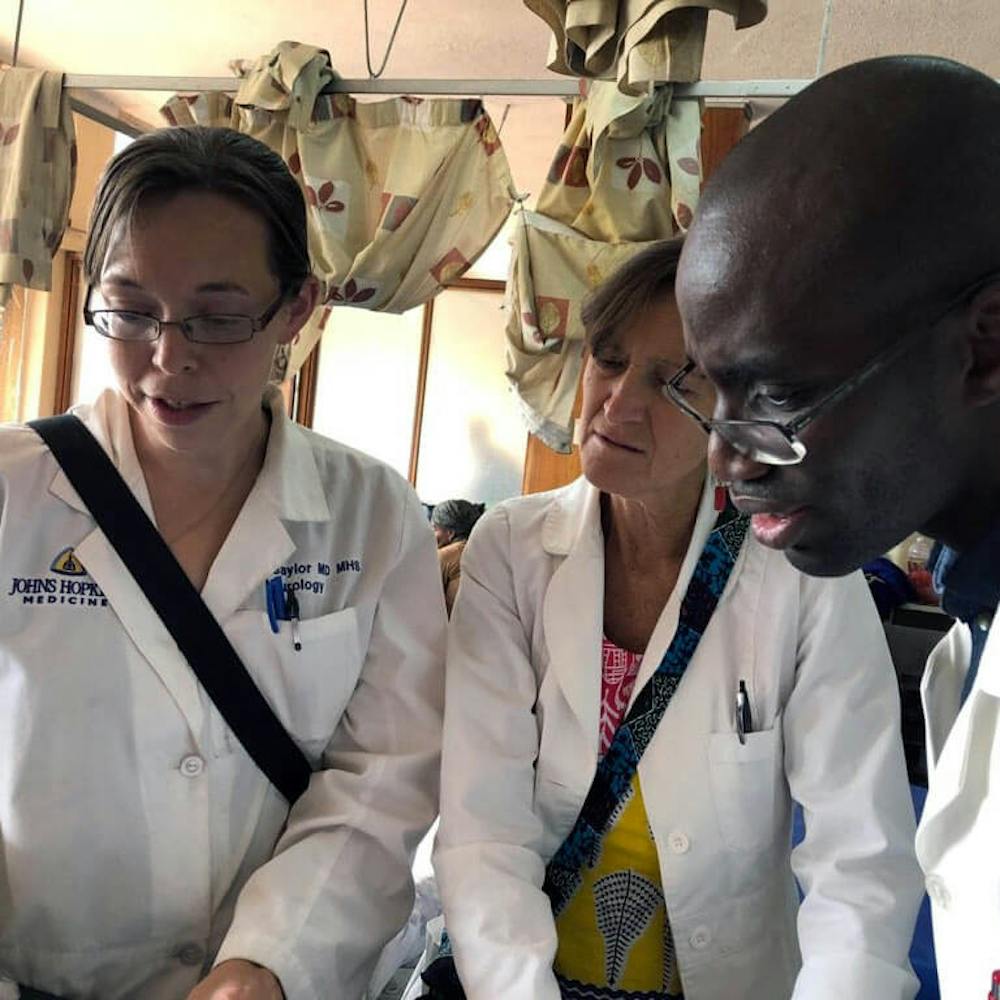Dr. Deanna Saylor, a specialist from the School of Medicine in neuro-infectious disease and neuroimmunology, gave a presentation on the creation of inpatient services and training programs in Zambia on Sept. 8.
“Neurological disorders are the leading cause of disability-adjusted life years worldwide and the second leading cause of mortality globally,” she said.
Saylor emphasized that it is important to consider that this burden is not distributed equally.
“75% of the global burden of neurological disease is in low- and middle-income countries, but these same countries have the smallest neurological workforce to work on these disorders,” she said. “While in high-income countries, there are over five neurologists per 100,000 people, in lower-income countries like Zambia this number drops to 0.1 per every 100,000 people.”
Only exacerbating this disparity, the neurological burden of disease is expected to grow exponentially over the next decade, and even more so in lower- and middle-income countries. In addition, Saylor explained that there are very few neurological training programs in places like Sub-Saharan Africa. As a result, there is no significant increase in the number of neurologists per population.
In 2018, Saylor joined the University Teaching Hospital (UTH) in Lusaka, Zambia. This is a large hospital, with 1,655 beds as opposed to the 1,162 at Hopkins Hospital. It is the primary teaching hospital in Zambia and the national referral hospital of Zambia. However, at the time when Saylor joined, the hospital had no designated neurology unit, and all neurological cases were treated in the internal medicine department.
While she was at UTH, Saylor met Dr. Aparna Nutakki, then a fourth-year medical student from Rush University in Chicago, who spent a year and a half working with Saylor in the inpatient neurological registry. There they conducted a comprehensive clinical registry, done over six months.
In the clinical study they found that their department experienced 749 admissions, which is about 125 admissions per month, and that 43% of their admissions were stroke cases. They also found that patients admitted to the hospital were usually near the ending phase of a stroke.
“Nearly 1/4 of stroke patients die in hospital, nearly 20% of non-stroke patients die and the most common non-stroke was seizures,” Saylor said. “Not only do we have a high burden of strokes, but we have a higher percentage of patients with hemorrhagic strokes... so their outcomes are significantly worse.”
There are two main types of strokes to consider when a patient is admitted for a stroke: hemorrhagic or ischemic. Generally patients with hemorrhagic strokes are more likely to face mortality. Since uncontrolled hypertension is one of the key risk factors for a hemorrhagic stroke and is more prevalent among lower-income populations, the patients in Zambia were much more likely to have a hemorrhagic stroke than an ischemic one.
While in 2018, UTH did not have a designated neurology unit, it did have all the basic tools necessary to care for patients, including computed tomography (CT), magnetic resonance imaging (MRI), electroencephalography (EEG), electromyography (EMG) and lumbar punctures. Since 2018, Saylor has spent her time building neurology training in Zambia.
At UTH, Saylor handled eight wards and took the responsibility of training new residents. She designed her own curriculum from scratch without any preconceived notions. Her hope was to blend traditional Zambian training with the training that is more prevalent in the United States.
As Saylor describes, didactic training in Zambia is usually heavily protected. However, in the U.S., she found that her didactic training was often interrupted and not protected. On the other hand, the U.S. medical curriculum has a heavier emphasis on clinical care.
In addition to providing training, Saylor also hoped to create an academic and research focus within her program.
“I wanted our residents to have the resources necessary to develop their own locally relevant data that would inform how they care for patients, their policy and advocacy activities with the Ministry of Health and... enable [them] to develop an evidence-based system of care,” she said.
Saylor’s proudest moment in her career was when the first group of trainees graduated a year ago. She aspires to become obsolete by training other people so that they can take over the program and rely on themselves locally.
While Saylor has accomplished a lot since 2018, she still has many future aspirations, including the development of teleneurology services, a tele-EEG service in development at provincial hospitals and the development of a stroke center adapted to low-resource settings.
In addition to clinical innovations, Saylor hopes to inspire various training innovations, including a virtual curriculum offered across the region, videotaped objective structured clinical exams, formal program evaluations and a revamped neurology curriculum.





